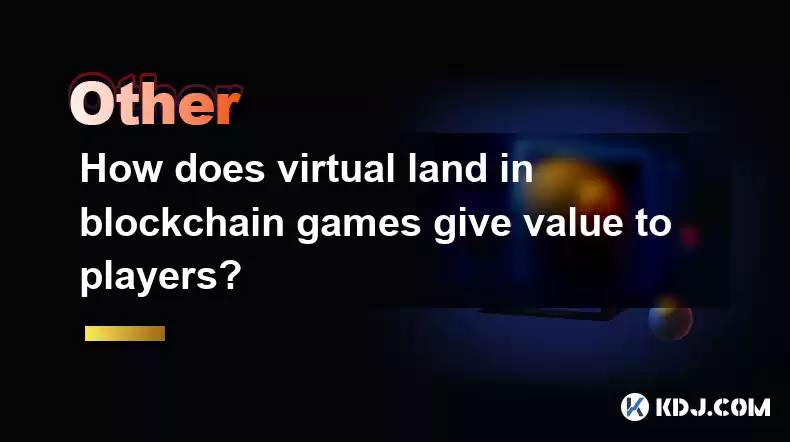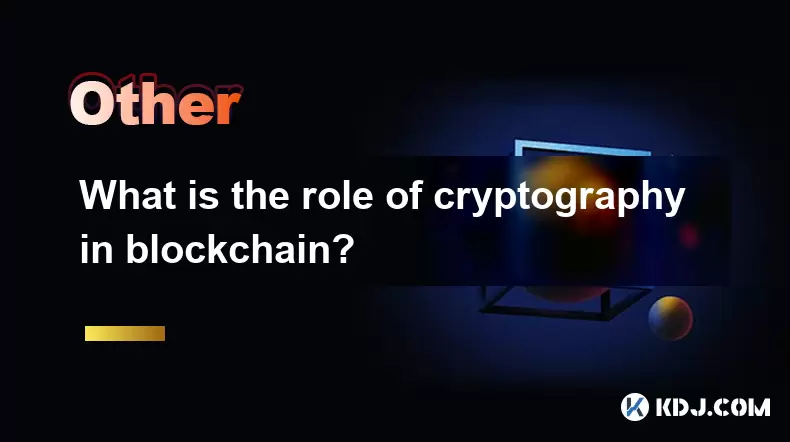-
 Bitcoin
Bitcoin $114000
0.38% -
 Ethereum
Ethereum $3494
-0.29% -
 XRP
XRP $2.876
-1.80% -
 Tether USDt
Tether USDt $0.9999
0.02% -
 BNB
BNB $749.1
-0.45% -
 Solana
Solana $161.8
-1.23% -
 USDC
USDC $0.9998
0.00% -
 TRON
TRON $0.3249
-0.42% -
 Dogecoin
Dogecoin $0.1987
-0.05% -
 Cardano
Cardano $0.7247
1.90% -
 Hyperliquid
Hyperliquid $38.39
0.52% -
 Stellar
Stellar $0.3889
2.87% -
 Sui
Sui $3.459
1.66% -
 Chainlink
Chainlink $16.18
1.43% -
 Bitcoin Cash
Bitcoin Cash $540.8
1.19% -
 Hedera
Hedera $0.2449
3.79% -
 Ethena USDe
Ethena USDe $1.001
0.03% -
 Avalanche
Avalanche $21.41
-0.12% -
 Toncoin
Toncoin $3.699
4.73% -
 Litecoin
Litecoin $110.0
3.08% -
 UNUS SED LEO
UNUS SED LEO $8.964
0.05% -
 Shiba Inu
Shiba Inu $0.00001221
1.28% -
 Polkadot
Polkadot $3.608
1.91% -
 Uniswap
Uniswap $9.150
1.59% -
 Monero
Monero $297.7
0.78% -
 Dai
Dai $1.000
0.02% -
 Bitget Token
Bitget Token $4.319
0.78% -
 Pepe
Pepe $0.00001051
1.89% -
 Cronos
Cronos $0.1323
0.20% -
 Aave
Aave $257.8
1.36%
How does virtual land in blockchain games give value to players?
Virtual land in blockchain games offers true ownership, economic benefits, and fosters community engagement, enhancing player value through scarcity and creativity.
Apr 14, 2025 at 06:42 pm

Virtual land in blockchain games represents a novel and exciting frontier within the cryptocurrency ecosystem, offering players unique opportunities and tangible value. The concept of virtual land is built on the foundation of blockchain technology, which ensures ownership, scarcity, and the ability to trade these assets securely. This article delves into how virtual land in blockchain games provides value to players, exploring various facets such as ownership, economic benefits, community engagement, and the potential for creativity and development.
Ownership and Scarcity
One of the primary ways virtual land in blockchain games adds value to players is through the concept of true ownership. Unlike traditional video games where in-game assets are controlled by the game developers, blockchain games use non-fungible tokens (NFTs) to represent virtual land. These NFTs are stored on a blockchain, ensuring that players have indisputable ownership over their land. This ownership is further reinforced by the scarcity of virtual land, which is often limited by the game's design. For example, in games like Decentraland and The Sandbox, the total amount of land is capped, creating a sense of rarity and value.
Economic Benefits
Virtual land in blockchain games also provides players with significant economic benefits. Players can monetize their land in several ways, including renting it out to other players, hosting events, or developing it into attractions that generate revenue. The ability to trade virtual land on marketplaces adds another layer of economic value. Players can buy land at a lower price and sell it later at a higher price, capitalizing on market trends and demand. This trading aspect turns virtual land into a potential investment opportunity, similar to real estate in the physical world.
Community Engagement and Social Value
Another crucial aspect of the value provided by virtual land is community engagement and social value. Many blockchain games foster vibrant communities where players can interact, collaborate, and build together. Owning virtual land can enhance a player's status within these communities, providing social prestige and recognition. Additionally, virtual land often serves as a hub for social activities, such as hosting events or gatherings, which can strengthen the sense of belonging and community among players.
Creativity and Development Opportunities
Virtual land in blockchain games also offers players unparalleled opportunities for creativity and development. Players can build on their land, creating unique structures, landscapes, or even entire virtual worlds. This ability to customize and develop virtual land allows players to express their creativity and potentially monetize their creations. For example, in The Sandbox, players can create games and experiences on their land, which can attract other players and generate income.
Integration with Other Blockchain Assets
The value of virtual land is further enhanced by its integration with other blockchain assets. Many blockchain games allow players to use various tokens and NFTs to enhance their land or participate in the game's ecosystem. For instance, players can use tokens to purchase items to decorate their land or to participate in governance decisions within the game. This integration creates a more interconnected and dynamic ecosystem, increasing the overall value and utility of virtual land.
Case Studies of Virtual Land in Blockchain Games
To illustrate the value of virtual land, let's examine two prominent examples: Decentraland and The Sandbox.
Decentraland: In Decentraland, players can purchase parcels of land represented by NFTs. These parcels can be used to build anything from art galleries to interactive experiences. The economic value of land in Decentraland is evident in its marketplace, where parcels have been sold for millions of dollars. The social aspect is also significant, with events like virtual fashion shows and conferences attracting thousands of participants.
The Sandbox: The Sandbox takes the concept of virtual land a step further by allowing players to create and monetize their own games on their land. Players can use VoxEdit to design 3D assets and then integrate them into their land. The Sandbox's marketplace allows players to trade these assets, creating a thriving economy around virtual land. The community aspect is strong, with players collaborating on large-scale projects and events.
Frequently Asked Questions
Q: Can virtual land in blockchain games be lost or stolen?
A: Virtual land represented by NFTs is stored on the blockchain, making it highly secure. However, the private keys to access these NFTs must be kept safe. If a player loses their private keys or falls victim to a phishing attack, they could lose access to their virtual land. It's crucial for players to use secure wallets and follow best practices for securing their assets.
Q: How can players ensure the value of their virtual land increases over time?
A: The value of virtual land can increase through various means, such as developing it into an attractive space, hosting popular events, or benefiting from overall growth in the game's ecosystem. Players should stay informed about market trends and the game's development roadmap to make strategic decisions about their land.
Q: Are there any regulatory concerns associated with owning virtual land in blockchain games?
A: Regulatory concerns can vary by jurisdiction. Some countries have clear regulations regarding virtual assets, while others are still developing their policies. Players should be aware of the legal environment in their region and any potential tax implications of buying, selling, or earning income from virtual land.
Q: How does virtual land in blockchain games compare to traditional gaming assets?
A: Unlike traditional gaming assets, which are controlled by game developers and can be taken away or devalued at any time, virtual land in blockchain games is owned by players and secured by blockchain technology. This ownership model, along with the ability to trade and monetize land, sets it apart from traditional gaming assets and provides a new level of value and autonomy to players.
Disclaimer:info@kdj.com
The information provided is not trading advice. kdj.com does not assume any responsibility for any investments made based on the information provided in this article. Cryptocurrencies are highly volatile and it is highly recommended that you invest with caution after thorough research!
If you believe that the content used on this website infringes your copyright, please contact us immediately (info@kdj.com) and we will delete it promptly.
- Arbitrage Adventures: Creditcoin, Kaspa, and Chasing Crypto Profits
- 2025-08-03 20:30:16
- Solana's Next Chapter: SOL Prediction and the SOLF Token Buzz
- 2025-08-03 18:30:16
- Token Chart Buzz: Analysts Eye Potential Price Increase with Mutuum Finance (MUTM)
- 2025-08-03 18:30:16
- Dogecoin, Utility Tokens, and Whales: A New Era for Crypto?
- 2025-08-03 19:10:16
- Small Cap Crypto Gem Alert: Ruvi AI's 100x Potential Shakes Up Solana, Ethereum, and XRP
- 2025-08-03 19:10:16
- Cryptos, Scarcity, and Beta Games: A Troller Cat's Perspective on the 2025 Meme Coin Mania
- 2025-08-03 19:15:16
Related knowledge

What is the difference between on-chain and off-chain transactions?
Aug 02,2025 at 04:22pm
Understanding On-Chain TransactionsOn-chain transactions refer to digital asset transfers that are recorded directly on a blockchain ledger. These tra...

What is a node's role in a blockchain network?
Aug 03,2025 at 03:16pm
Understanding the Function of a Node in a Blockchain NetworkA node is a fundamental component of any blockchain network, acting as a participant that ...

What is the double-spending problem and how does blockchain prevent it?
Aug 02,2025 at 01:07pm
Understanding the Double-Spending ProblemThe double-spending problem is a fundamental challenge in digital currency systems where the same digital tok...

What is the difference between a blockchain and a database?
Aug 01,2025 at 09:36pm
Understanding the Core Structure of a BlockchainA blockchain is a decentralized digital ledger that records data in a series of immutable blocks linke...

How does blockchain handle scalability?
Aug 02,2025 at 02:58pm
Understanding Blockchain Scalability ChallengesBlockchain scalability refers to a network's ability to handle an increasing volume of transactions wit...

What is the role of cryptography in blockchain?
Aug 03,2025 at 03:42pm
Understanding the Foundation of Blockchain SecurityCryptography is the cornerstone of blockchain technology, providing the essential tools to ensure d...

What is the difference between on-chain and off-chain transactions?
Aug 02,2025 at 04:22pm
Understanding On-Chain TransactionsOn-chain transactions refer to digital asset transfers that are recorded directly on a blockchain ledger. These tra...

What is a node's role in a blockchain network?
Aug 03,2025 at 03:16pm
Understanding the Function of a Node in a Blockchain NetworkA node is a fundamental component of any blockchain network, acting as a participant that ...

What is the double-spending problem and how does blockchain prevent it?
Aug 02,2025 at 01:07pm
Understanding the Double-Spending ProblemThe double-spending problem is a fundamental challenge in digital currency systems where the same digital tok...

What is the difference between a blockchain and a database?
Aug 01,2025 at 09:36pm
Understanding the Core Structure of a BlockchainA blockchain is a decentralized digital ledger that records data in a series of immutable blocks linke...

How does blockchain handle scalability?
Aug 02,2025 at 02:58pm
Understanding Blockchain Scalability ChallengesBlockchain scalability refers to a network's ability to handle an increasing volume of transactions wit...

What is the role of cryptography in blockchain?
Aug 03,2025 at 03:42pm
Understanding the Foundation of Blockchain SecurityCryptography is the cornerstone of blockchain technology, providing the essential tools to ensure d...
See all articles

























































































